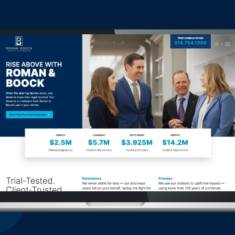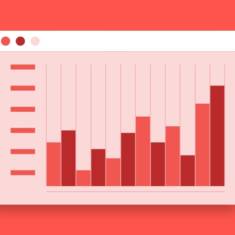The Basics of Data-Informed Marketing
03.06.20
Data: it’s the biggest buzzword to hit the marketing world in decades—and for good reason. Whether it’s the number of visits to your website or the number of products they buy on it, your web data offers wide-reaching insights into your business. Data can help you understand who your target audience is, how they use your website and how they make purchase decisions. But with so much information available at your fingertips, it’s important to know what to look at, how to interpret it and when to walk away from it.
-
Identify the Right Data
Every business uses their website differently. Some treat it as an online brochure, others view it as a sales tool. How you use your website will inform the type of data you should examine. For example, let’s say you’re a professional services firm and you use your website to publish relevant content about news and trends in your industry. Your most relevant data might include:
- Page views on blog posts
- Time spent on page for blog posts
- Click-throughs to additional posts on your website
Once you understand the data that’s most important to your website, you can set clear goals around them. Maybe you want to increase your blog’s readership by 10% this quarter. Or get 100 more submissions on your contact form before the year ends. Whatever your goals may be, you’re sure to find data on your website that helps you track them.
-
Put Your Data to Good Use
One of the best features of modern websites is their editability. Your website’s key data will inform and empower you as you make changes to your website, both big and small. Using our earlier example, a business that emphasizes online content might consider:
- Making the blog section more prominent on the website
- Improving the visibility of calls to action
- Adding targeted keywords to each blog post
- Gating exclusive content behind a contact form
Remember to monitor any changes you make to your website over time. If your efforts result in improvements to your key data, then you’re generally on the right track. Ultimately, optimizing your website is an ongoing task that requires consistent monitoring and analysis, plus a working knowledge of best practices in web design.
-
Remember Data Isn’t Everything
With today’s tools and technologies, there’s no limit to the amount of data you can collect on your website. That’s not necessarily a good thing. If you get carried away and start tracking everything, you lose focus on the data that’s most relevant to your business. Remember: data provides snippets of information, and it rarely tells the full story. An experienced data analyst will be able to collect and interpret your website’s data while providing continual recommendations for improvement.
Take Ownership of Your Data
More organizations are discovering the potential of their website’s data and using it to drive more visits, more conversions and more profits from their website. After all, your website should work for you, not against you. Let our strategists show you the difference. We’ll help you navigate the process and build a website that delivers tangible value to your bottom line.


